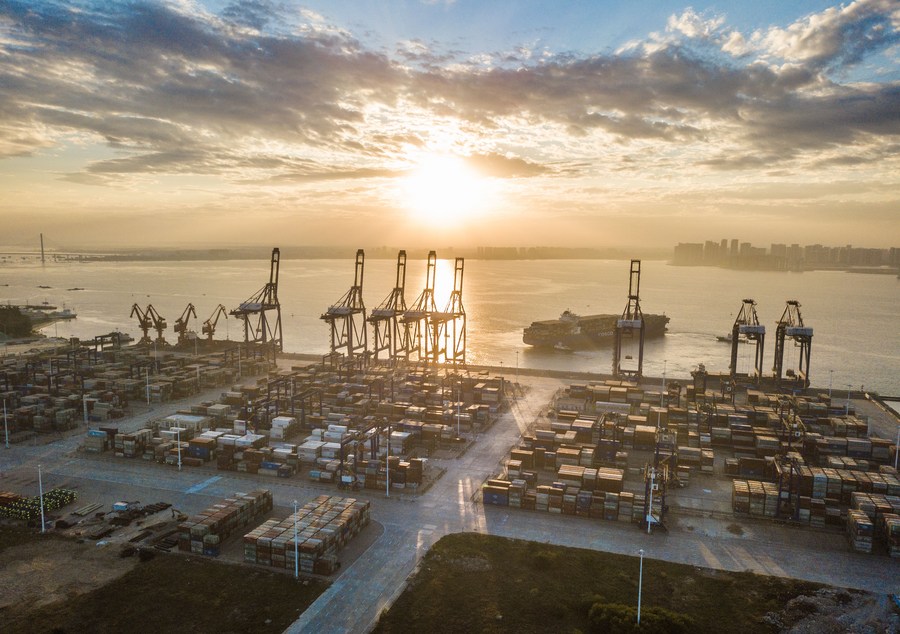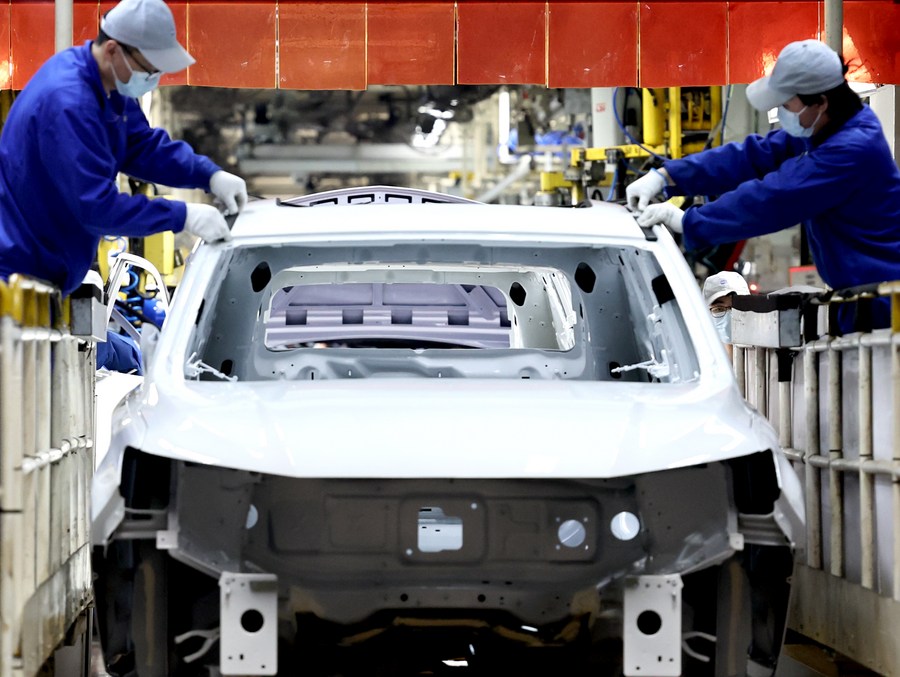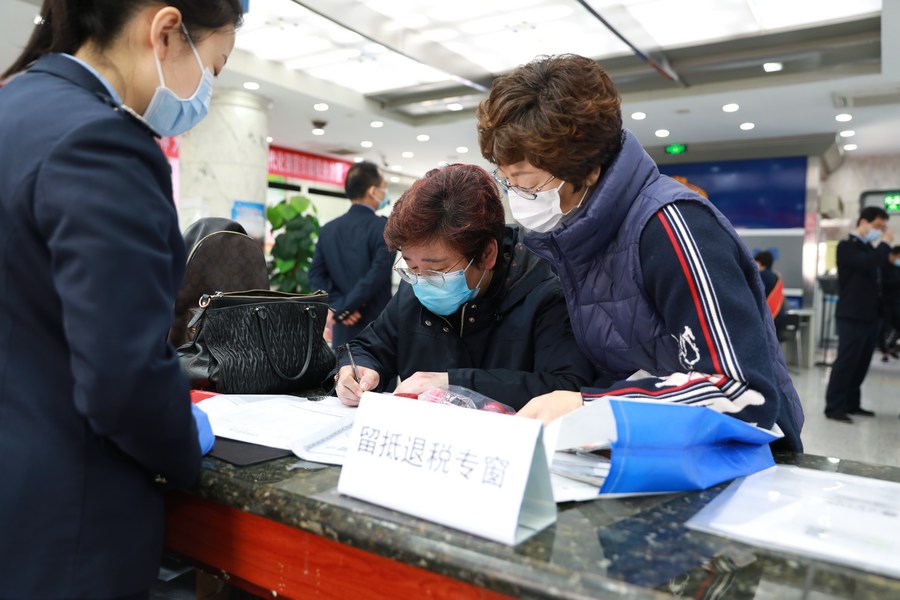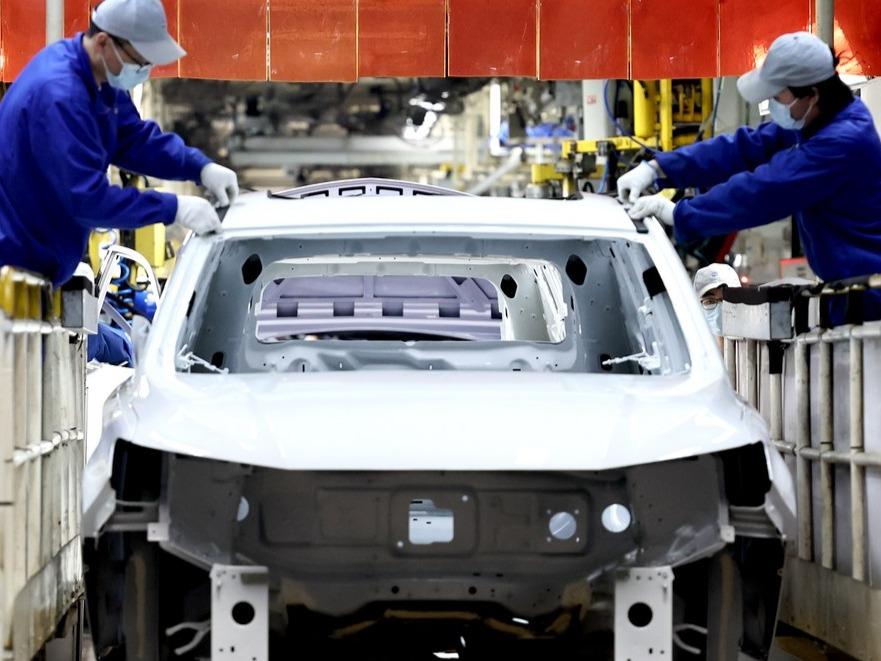* Profit growth of China's industrial firms quickened in the first quarter as the country rolled out a pro-growth policy mix to cope with complicated global challenges and resurgences of COVID-19 infections.
* As early as December, Chinese policymakers concluded that its economy would be under "the triple pressure of shrinking demand, supply impact and weakening expectations" and made coordinated policy arrangements.
* Although the Chinese economic environment in 2022 is not optimistic, the country still has enough policy leeway to bolster steady economic growth.
BEIJING, April 27 (Xinhua) -- Profit growth of China's industrial firms quickened in the first quarter as the country rolled out a pro-growth policy mix to cope with complicated global challenges and resurgences of COVID-19 infections.
China's major industrial firms, each with annual main business revenue of at least 20 million yuan (3.05 million U.S. dollars), saw their combined profits reach 1.96 trillion yuan in the first three months of 2022, up 8.5 percent year on year, data from the National Bureau of Statistics (NBS) showed Wednesday.
Commenting on the encouraging figures, NBS senior statistician Zhu Hong highlighted the role of tax and fee cuts and supportive policies in helping businesses reduce costs and increase profitability during the period.
PRO-GROWTH POLICY MIX
These supportive policies are part of the policy mix that the country has adopted to brave the virus headwinds and buoy growth.
As early as December, Chinese policymakers concluded that its economy would be under "the triple pressure of shrinking demand, supply impact and weakening expectations" and made coordinated policy arrangements.
The world's second-largest economy has since stepped up policy implementation to cushion downward pressure and rolled out new measures in response to changing economic dynamics and the epidemic situation.

Aerial photo taken on Dec. 5, 2021 shows the sunrise scenery of the Yangpu international container port at Yangpu economic development zone in south China's Hainan Province. (Xinhua/Pu Xiaoxu)
Despite being the first to register positive growth after the COVID-19 outbreak, the Chinese economy inevitably stumbled during the past few months as the Omicron variant has infected more people and disrupted regular business activities.
The country's supply and industrial chains felt the immediate blow. Resurgences of COVID-19 infection cases in cities, including Shanghai, forced factories in some areas to suspend production and stalled the flow of goods.
At a national teleconference on ensuring the stability of supply and industrial chains last week, Chinese Vice Premier Liu He urged efforts to eliminate obstacles to product flows across the nation.
The meeting said the country pledged to create a "white list" of foreign trade firms and companies in the automobile, medical, and other key sectors.

Employees work at the assembly workshop of automaker SAIC Motor Company's Lingang base in Shanghai, east China, April 23, 2022. (Xinhua/Chen Jianli)
Apart from tackling new problems, China has extended stronger support to its real economy. Pivotal to the overall economic development, the country has placed concerns of the 150 million market entities high on its policy agenda, unveiling a string of pro-growth measures at both micro and macro levels to help them overcome difficulties.
China has granted tax refunds and fee cuts to reduce burdens for businesses, a policy package expected to save around 2.5 trillion yuan for taxpayers this year.
More financing support has also been granted to cash-strapped companies, with data showing a 24.6-percent year-on-year increase in outstanding inclusive loans for small and micro enterprises by the end of March.

Tax payers get tax refunds for small and micro enterprises in Tianjin, north China, April 1, 2022. (Xinhua)
Meanwhile, macro policies, which mainly comprise monetary and fiscal policies, have also been leveraged to stabilize growth.
On Monday, the country's central bank lowered the reserve requirement ratio for financial institutions by 0.25 percentage points. Designed to support the real economy, the cut is expected to free up 530 billion yuan in long-term liquidity into the market.
The bank has also announced that it would contribute over 1 trillion yuan to the central government, a move that experts believed could effectively funnel more funds to businesses and energize their vitalities.
On the fiscal front, 3.65 trillion yuan of special-purpose bonds for local governments are about to be issued this year while national general public budget will be increased to 26.71 trillion yuan.
Regarding science and technology innovation as a strategically important pillar for high-quality development, China has also carried out policies to bolster the development of this sector.
It has implemented a three-year action plan to revamp the science and technology system, worked out a ten-year plan for basic research, and encouraged enterprises to play a more significant part in innovation.
ENOUGH POLICY LEEWAY
Although the Chinese economic environment in 2022 is not optimistic, the country still has enough policy leeway to bolster steady economic growth, said Martin Raiser, the World Bank's country director for China.
Raiser believes that China remains an attractive place for global business, expecting that companies here for the Chinese market would stay in the country.
Official data showed that China's gross domestic product grew 4.8 percent year on year to 27.02 trillion yuan in the first quarter, quickening from a 4-percent increase in the fourth quarter last year and generally running in a reasonable range.
China watchers can be assured that policymakers in the country are keeping a close eye on the evolving economic landscape. China has already worked out policies to coordinate growth with epidemic control, and more policy mixes are in the pipeline, said Liao Min, vice finance minister. (Video reporters: Xiong Maoling, Hu Yousong, Liu Chang, James Asande; video editors: Yang Zhixiang, Cao Ying, Wang Houyuan, Zhang Yuhong)




 A single purchase
A single purchase









